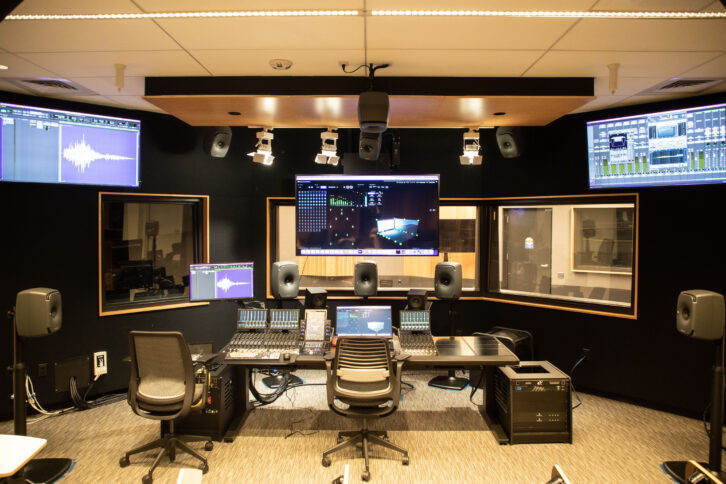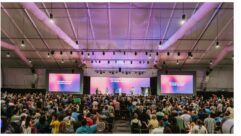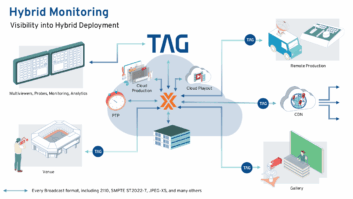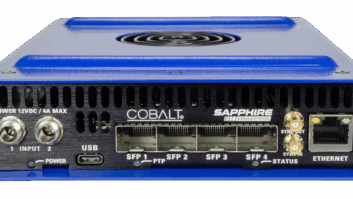
— The new Media and Immersive eXperience (MIX) Center, home of The Sidney Poitier New American Film School at ASU draws from Genelec’s comprehensive product lines to perfectly fit the needs of each space within it, from mixing for picture, ADR, and film scoring, with many of the studios equipped for Dolby Atmos® and with a provision for ambisonic monitoring —
NATICK, MA —The Media and Immersive eXperience (MIX) Center, home to The Sidney Poitier New American Film School at Arizona State University (ASU), saw the opening of novel facilities in 2022 at its Mesa, AZ location, seven miles from the University’s main Tempe campus. The new 118,000-square-foot, state-of-the-art facility, located within the Herberger Institute for Design and the Arts, hosts The Poitier Film School’s 750 undergraduate film majors. The Poitier Film School offers students a curriculum in film and media production and filmmaking practices, as well as enabling students to earn a four-year degree in film with access to industry standard production facilities and equipment.
The emphasis on audio at the facility, which opened for the fall 2022 semester, is made clear by how much of it is dedicated to sound: three main studios focused on mixing, ADR/scoring, and foley, are all equipped with immersive Dolby 7.1.4 Atmos® systems. The main mix control room, which is also a 25-seat classroom, is capable of 3rd-order ambisonics monitoring. There are also three 5.1-surround-capable audio editing rooms, three 30-seat computer labs, and sixteen video edit bays with three of those focused on color grading, as well as a color grading classroom. What ties all of these advanced educational and production spaces together is audio monitoring from Genelec. The components were sourced through the Burbank, California-based firm ALT Systems, who were also involved with the installation and calibration of the systems.
Every room, from the 7.1.4 spaces to the stereo-oriented video editing rooms, has Genelec active monitors which creates a sonically consistent environment through the entire facility. For instance, the three largest mixing rooms use Genelec 8351B Smart Active Monitors™ as their L-C-R array and 8341As for the surrounds and overheads, with a pair of 7370A subwoofers. The 5.1 audio-editing studios and two video-forwarded computer labs, which are heavily used for film, tv, streaming, game design and a diverse set of student projects, each use five 8330A monitors and a 7360A subwoofer. The audio-forwarded computer lab has a 7.1.4 Dolby Atmos set with additional side and overhead monitors. The color grading and QC classroom is Atmos-capable. The video editing bays are set up for 7.1, and the rest are configured for stereo monitoring — All with a combination of Genelec 8020D, 8030C, and 8040B monitors, plus 7360A subs.
“I’ve been using Genelec monitors for about two decades. Monitoring choices can be a matter of personal taste, but here we needed a near-field monitoring solution that we not only trusted but also could apply as seamlessly as possible to the entire facility, that could quickly switch between monitor combinations and configurations that our projects might call for. We operate a complete post-production workflow, from editing, sound, color, to quality control and final delivery (mastering). All considering immersive formats such as Dolby Atmos. For this reason, we needed to make sure that any project that had to move between rooms in the facility had a consistent sonic experience. For student projects and group activities, the wider and more natural sweet spot experience that the concentric configurations of Genelec’s “The Ones” models provide us is also a helpful educational tool. Whether our students are designing sounds, or mixing for film, streaming platforms, games or XR experiences, we want to make sure that they develop listening skills throughout the process,” says Prof. Rodrigo Meirelles, Clinical Assistant Professor of Sound Design/Film and Media at The Poitier Film School at ASU.
It goes beyond monitors, though. The Genelec Loudspeaker Manager (GLM) software platform was used, in conjunction with Genelec’s AutoCal 2 calibration algorithm, to automatically measure and manage how the monitors and subwoofers are installed and positioned in each room. But that technology was taken even further, becoming part of the facility’s educational mission. Meirelles points out that “using GLM, we can graphically demonstrate to students what EQ calibration curves in a space look like and the effect that room acoustics have on monitor placement – and vice versa. At the push of a button, we can let them hear what a monitor sounds like when it’s tuned for the room it’s used in. And since it is software based, we can show them how the process works on the screen.”
So it’s clear that at ASU, Genelec is more than just monitoring here — it’s part of the educational process.
For more information, please visit www.genelec.com.
Photo caption: The main mix control room, which is also a 25-seat classroom, at the new Media and Immersive eXperience (MIX) Center, home of The Sidney Poitier New American Film School at Arizona State University, featuring a Dolby 7.1.4 Atmos® system composed of Genelec Smart Active Monitors™. Dolby Photo credit: Qianhui Ma.










